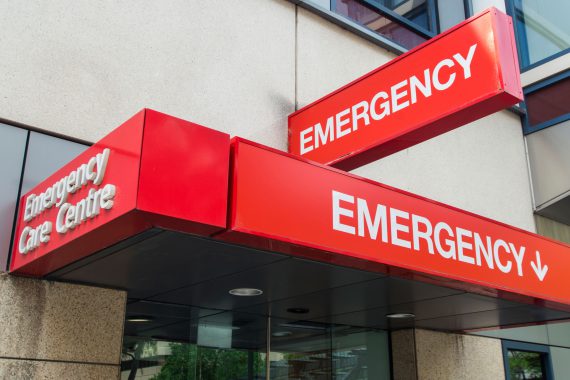A&E four hour performance figures well below 95% target

Only 82.45% of A&E departments are currently meeting the target of seeing patients within four hours of attending, the Royal College of Emergency Medicine (RCEM) has reported.
The latest figures reveal that in the fourth week of November performance against the four hour target is well under NHS England’s 95% standard, and has dropped considerably from 85.23% the previous week.
The underlying picture shows 15 increases and 38 decreases across the whole project group of 50 UK NHS Trust sites.
These figures come as NHS England has been predicting a severe winter for the health service, in part due to a heavy flu season in Australia, while all trusts have been given funding to include a GP ‘streaming service’ to alleviate pressure on A&E.
These figures have been released as part of the RCEM’s recently launched annual Winter Flow Project, which runs to March 2018, to look at pressures impacting on the emergency care system over the winter period on a weekly basis.
It also found:
- The number of patients experiencing delayed transfer of care has worsened in the fourth week of November to 1,997, up from 1,982 the previous week. But this is down from 2,643 at the same point last year, and lower than the 2,059 delays reported at the beginning of October 2017, the first week of data collection;
- There is a rising trend in the number of cancelled elective operations. A total of 3,530 were cancelled last week, up from 3,388 the previous week and 3,302 at the beginning of November;
- A total of 27,328 elective operations have been cancelled over the project to date, an average of 62 cancelled operations per site per week;
- The number of locum and agency doctors and nurses employed in emergency departments within the project group is at 568, up from 557 the previous week and 481 at the beginning of October.
Gordon Miles, chief executive of the RCEM, said that the data shows that although we are ‘at the start of what is widely expected to be a challenging winter, NHS providers continue to strain every sinew to maintain performance.’
He went on to explain: ‘We remain some considerable distance from standards set out in the NHS Constitution, but it is only fair to note that at 82.45% four hour standard performance in emergency departments remains slightly better than at the same point last year, 81.28%.
‘It is also evident that efforts mandated by NHS England to free up acute beds by reducing the number of delayed transfers of care have had some impact, although NHS Providers have been right to point out that whatever progress is being made is unlikely to be enough to free up 3,000 beds.’
The chief executive also expressed concern at the increasingly high level of cancelled elective operations; 3,530 as compared with 2,470 at the same point last year.
‘Providers are making determined efforts to lower their bed occupancy levels by cancelling increasing numbers of elective operations. To some extent, care is already being rationed,’ he said. ‘This may turn out to be a false economy not only because clearing the backlog will eventually require large sums of money the NHS currently does not have, but because patients with untreated problems are likely to turn up in A&E requiring treatment which might otherwise been unnecessary.’
Professor Azeem Majeed, professor of primary care and head of the department of primary care and public health at Imperial College London, said: ‘The pressures on emergency departments are one of the many challenges the NHS is currently facing. Many of the patients seen in emergency departments could potentially be dealt with in general practice.
‘However, GPs and their staff are under enormous pressure from rising workloads and have no capacity to take on extra work. There are also major recruitment and retention problems in general practice. Until these problems start to be addressed, something that the NHS Five Year Forward View in England has thus far failed to do, general practices will have very limited capacity to offer extra appointments and divert patients away from emergency departments.’









